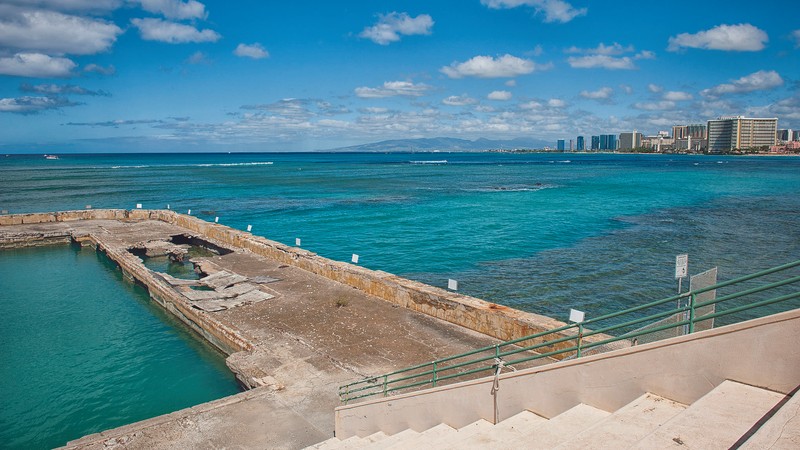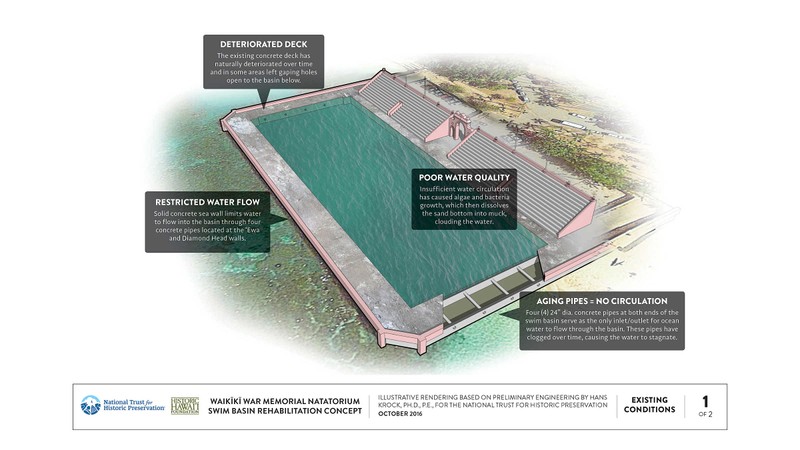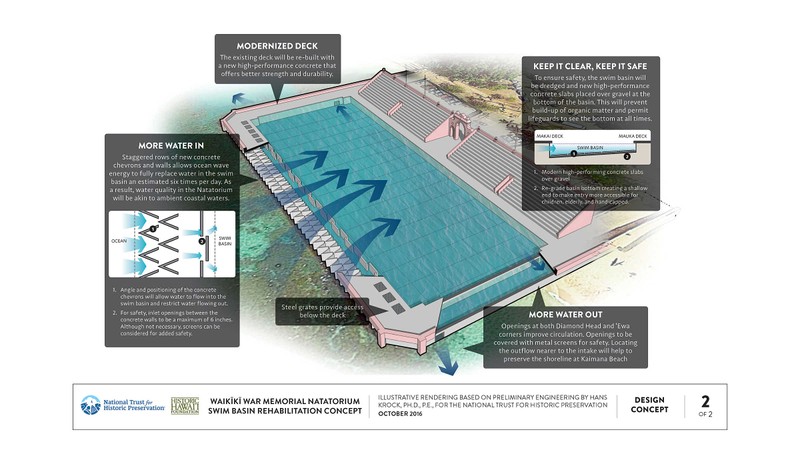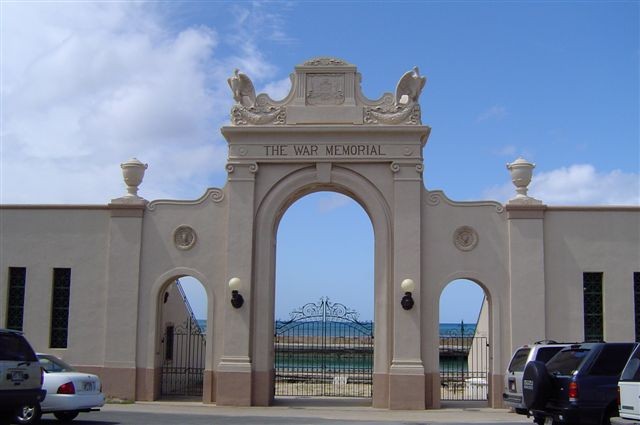Waikiki Natatorium War Memorial
Introduction
Text-to-speech Audio
This grand natatorium was designed by Lewis P. Hobart as a publicly funded memorial to Hawaii veterans of World War I. After years of fundraising efforts, including a public bond offering, the facility was dedicated on August 24, 1927. During World War II, the ocean water pool was utilized for training exercises by the U.S. military and then returned to the city for public use. By the 1960s, deferred maintenance led to deterioration and the site was officially closed in 1963 but continued to be used until 1979. Interest among local citizens and preservationists ebbed and flowed, leading to the structure being listed on the National Register of Historic Places in 1980 and a series of campaigns aimed at restoring the structure. These efforts are ongoing and an organization listed in the links below hope to restore and reopen the historic saltwater pool.
Images
Current state of the deck

Current design

New design

Entrance to the pool

Backstory and Context
Text-to-speech Audio
The Waikiki Natatorium War Memorial was built in 1927 by Lewis P. Hobart and is dedicated to the men and women who served in the military during World War I- known at the time of the dedication as the Great War. The structure was designed to act as an ocean-filled and Olympic-sized swimming pool for the public. Opening Day ceremonies on August 24, 1927 included guests such as Duke Kahanamoku, known as the "Father of Modern Surfing" and Olympic gold medalists opening the pool by being the first to enjoy a swim in the pool.
In the years that followed, the memorial hosted many celebrities such as Buster Crabbe, Esther Williams, and Johnny Weissmuller. The Department of Education used the pool to offer lessons with its Learn to Swim program. Following the attack of Pearl Harbor, the military took control of the facility and used it for training. The structure was later refurbished and returned to the city in 1949, but the cost of maintaining the structure led to deferred maintenance. The city officially closed the pool but local citizens continued to use it, leading some city leaders to favor plans for demolition as the estimated cost to repair the aging structure was in the millions. However, the cost of demolition was also expensive and the structure remained in a state of slow deterioration for years.
Public interest ebbed and followed in the late 20th and early 21st centuries. Preservationists worked to add the structure to the National Register of Historic Places in 1980, and in 1995 it was listed among America's most endangered historic places. In 1997, the city conducted a study that recommended essential repair would cost less than demolition. Repairs to the outside wall, volleyball court, lifeguard station, parking lot, and locker rooms were completed in the next few years, but the larger cost of stabilization and repair to the pool foundation and bleachers were deferred. As of 20221, local celebrities and and residents continue efforts to raise awareness and funds for repair.
Sources
“Waikiki Natatorium War Memorial.” World War I Centennial - World War I Centennial, n.d. http://www.worldwar1centennial.org/index.php/component/gmapfp/563:natatorium-waikiki.html?view=gmapfp.
“Waikiki War Memorial Natatorium Background.” Historic Hawaii Foundation, April 21, 2017. https://historichawaii.org/waikiki-war-memorial-natatorium-background/.
“Waikiki War Memorial Natatorium: National Trust for Historic Preservation.” Waikiki War Memorial Natatorium | National Trust for Historic Preservation. Accessed June 30, 2021. https://savingplaces.org/places/natatorium.
https://savingplaces.org/stories/saving-the-war-memorial-natatorium
https://savingplaces.org/places/natatorium
https://savingplaces.org/places/natatorium
http://www.worldwar1.com/dbc/natator.htm
